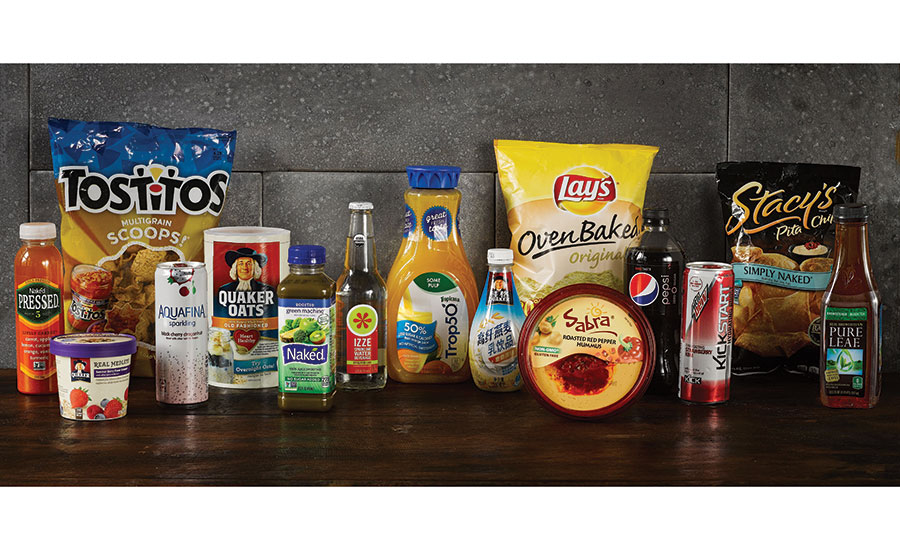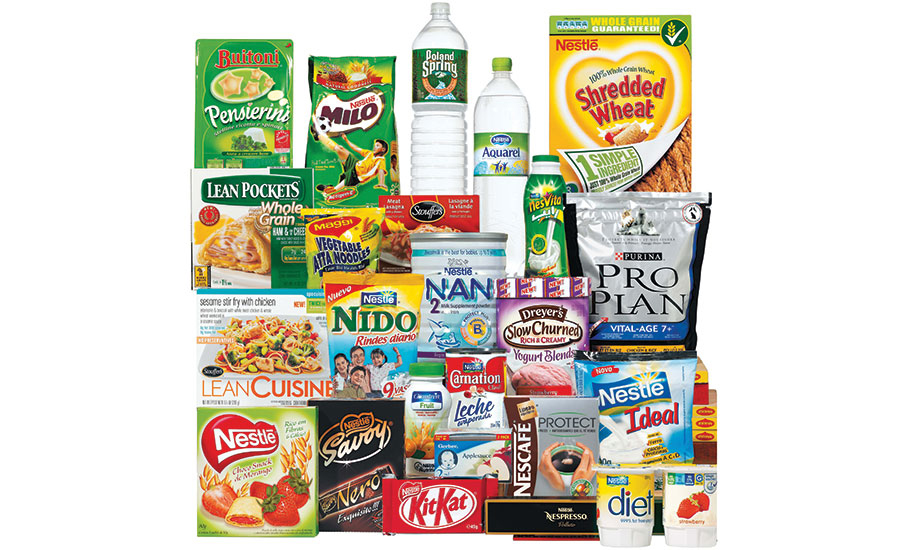There can be no doubt that food is big business in the United States. In 2017, the U.S. market for packaged foods reached $378 billion, according to Statista, an online statistics portal. That’s a pretty amazing number, especially when it has been estimated that the 10 largest food and beverage manufacturers account for 80 percent of the product offerings in grocery stores.
For several years, the Packaging Strategies list of the Top 50 Food Packaging Companies has changed very little. Sure, there has been some juggling of the ranks as major manufacturers buy, sell or otherwise consolidate their divisions. But once again, Nestlé, JBS, Tyson, Pepsico and Mars round out the top five food packaging companies in the 2018 rankings.
Click Here for The 2018 Top 50 Food Packaging Companies Rankings
(This list only includes food manufacturers with packaged products for the retail market. It does not include major food ingredient suppliers.) While some companies on the list are well-known for their beverage products, we have attempted to identify them here based only on their food product sales.
CONFRONTING MARKET CHANGES
These national and international brand owners are facing substantial challenges. Industry stalwarts—such as General Mills, Hershey, Campbell Soup and Pepsico—have seen their stock prices dip as sales falter.
Consumer tastes are changing dramatically. For the first time in 50 years, large consumer goods brands lost market share to small competitors over the last five years, Jim Brennan, a senior partner at Boston Consulting Group recently told CNN. One report shows that the top 25 food manufacturers in the U.S. have grown revenue at 1.8 percent annually since 2012, compared with 11 to 15 percent growth for smaller companies.
Several trends are creating a changing environment for large food brand owners:
- Fresh food departments are growing at the expense of center store and processed foods.
- Consumers are eager to try bold and exotic flavors, prompting the launch of many new companies catering to adventurous palates.
- More foods are being developed that go beyond basic nutrition to support health and energy levels.
- Locally sourced foods with a direct-to-consumer model are becoming ever more attractive.
- Consumers are demanding transparency in every aspect of the food supply chain.
- More consumers, particularly millennials, want to know their food is sustainably produced and packaged.
Some companies, such as Pepsico, are jumping onto global wellness trends, as noted in the recent Forbes Global 2000 report. Pepsico has divided its brand portfolio into “fun for you,” “better for you” and “good for you” categories. Forbes reports that at the end of 2017, the “better for you” and “good for you” categories (which contain products like Quaker Oats, Sabra hummus and Naked Juice) now account for 50 percent of Pepsico’s product
offerings, up from about 38 percent 10 years ago.
The business model for the national brands is undergoing substantial change. Retail consolidation, increased competition from start-ups and private labels, and fading consumer loyalties all constrict the food giants.

Large food manufacturers, such as Pepsico, whose products are pictured here, produce a wide variety of both foods and beverages. Some brands claim sales in excess of a billion dollars themselves.
ADAPTING TO CONSUMER NEEDS
Nonetheless, there are a variety of opportunities for growing food and beverage businesses in 2018, writes Cristin Singer, a partner at RSM (rsmus.com), a global network of independent audit, tax and consulting firms. In a recent report, she says, staying on top of changing customer needs, understanding millennial preferences, leveraging new packaging and employing key technology and acquisition strategies will all be essential in this competitive marketplace.
“The consumer is the new expert on products and packaging,” says Kaylor Hildenbrand, principal consultant at PARK Research Partners (parkresearch.com). “They no longer quietly accept what you give them. Success for companies now lies in them becoming the expert on their consumers. Brands need to dig in and search for a deeper understanding and make sure they have a current view of the consumer landscape and lifestyles as they continue to evolve.”
Meanwhile, the growth of cheaper private brands and the appearance of retail discounters such as Aldi, Lidl, Dollar General and Dollar Tree is limiting the larger corporations’ ability to raise prices and still be competitive. Smaller players have proven more nimble in introducing new products that emphasize fresher, organic trends, while undercutting big brands’ prices.
“There is a tax that comes with buying a national brand which is basically a marketing and innovation tax,” says Christopher Durham, consultant and president of My Private Brand (mypbrand.com). “If you (consumers) believe your brand is great, then you are willing to pay that tax. The problem is if your consumer no longer believes your brand adds value, they’re no longer willing to pay what the brand demands. Lots of national brands are shrinking because consumers are asking if brands matter.” Not that consumers don’t care about brands, he says, they just don’t care about old-school packaged goods brands.

Nestlé is the largest food manufacturer globally. This company’s brands run the gamut from chocolates to pet foods and can be found in all corners of the world.
PRODUCT DEVELOPMENT ALTERNATIVES
Many companies are expected to add new product lines or introduce healthier products and ingredients to their existing foods and drinks in 2018. Rather than developing these newer products organically within their existing operations, large companies are snapping up smaller competitors. These acquisitions are frequently done at a lower cost than spending the time and resources in internal research and development to create these newer products.
In the introduction to their study, “Incubating Tomorrow’s Billion Dollar Food Brands,” the Hartman Group (hartman-group.com) wrote that large food manufacturers “could benefit from either acquisition or minority investment in early-stage growth brands as a valid, though uncomfortably different, path to the next $1 billion brand in their portfolio.”
Start-ups are getting attention because they can take more risks with new flavors and textures, and they know how to make a splash, Hildenbrand says. “They need to shine from day one, so we see more of these new brands hitting the shelves in premium packaging, and often demanding a premium price.”
Further, the new, smaller brands do not have the same constraints, such as answering to Wall Street on margins or converting large-scale, established packaging lines to deliver a new feature or format.
In addition, many of the food giants are simply acquiring other medium-to-large competitors either to consolidate the brands in a given sector or to add complementary products to their portfolio. Over the past year, Nestlé acquired a majority stake in Blue Bottle Coffee for $425 million, General Mills bought pet food company Blue Buffalo for $8 billion, Campbell acquired Snyder’s-Lance snacks for $5 billion, and Hershey purchased SkinnyPop popcorn-maker Amplify Snack Brands for $1.6 billion. In recent weeks, snacks maker Mondelez bought Tate’s Bake Shop for $500 million.
More Top Food Packaging Companies Resources
Top 50 Archives
2017 | 2016 | 2015 | 2014 | 2013 | 2012 | 2011
Click on a year to view the report and see how the Top 50 food packaging companies ranked.
Top Food Packaging Companies in the News
Read more top food packaging companies content.
Methodology:
Our top 50 food packagers rankings are based primarily on a list of the top 100 food manufacturers supplied by Dun & Bradstreet. These data have been supplemented using sources that include company annual reports, news reports, company websites and direct company contacts. Sales are based on calendar year 2017 or the most recent fiscal year. For foreign currency conversions, we used XE.com historical data for Dec. 31, 2017. Many of these companies produce both food and beverage products. Where possible, we have separated food revenue from beverages and other segment revenues.


